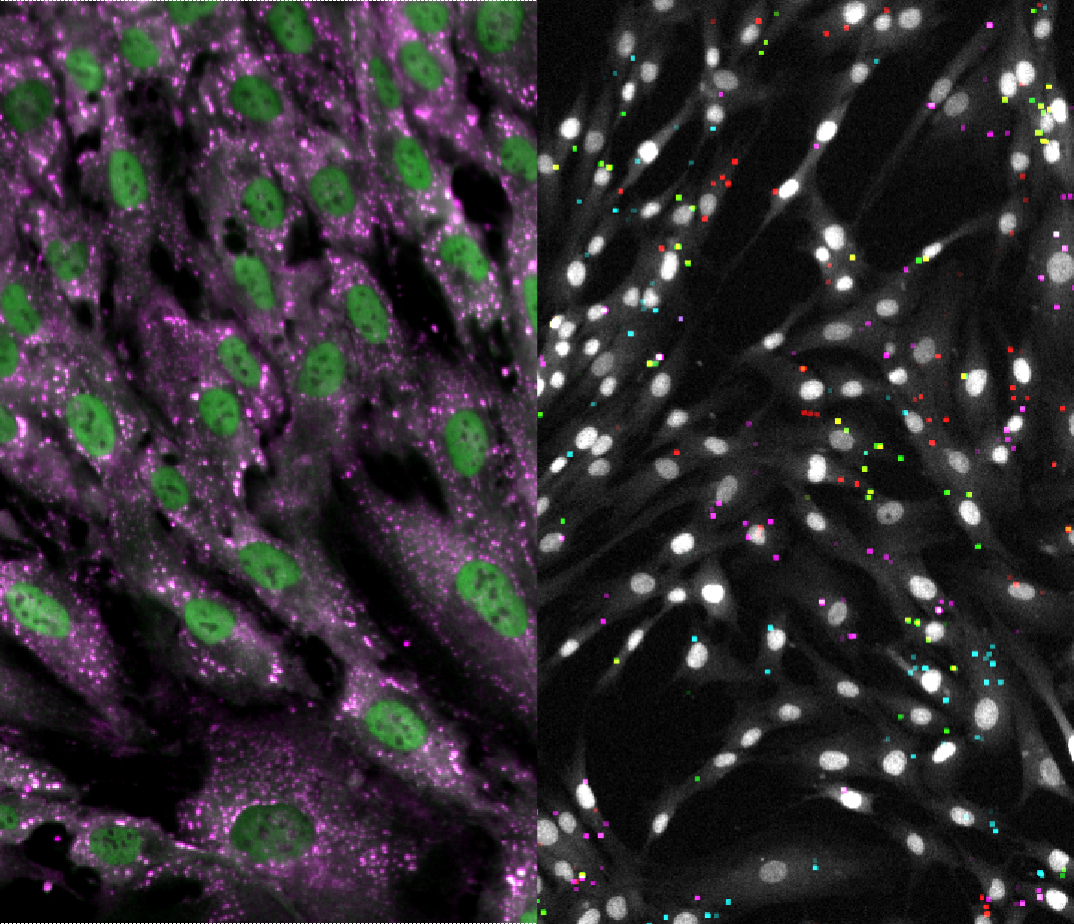Neurodegenerative diseases, including Alzheimer’s, ALS, and Parkinson’s, pose a significant public health challenge, with an estimated 12 million Americans projected to be affected by 2050. The Chan Zuckerberg Initiative (CZI) is proactively addressing this crisis by uniting researchers from various fields to pioneer groundbreaking ideas. This article delves into the CZI’s Neurodegeneration Challenge Network (NDCN) and highlights some of the funded projects that are driving advancements in our understanding and treatment of these devastating conditions.
Through initiatives like the Collaborative Pairs Program, CZI supports interdisciplinary teams in developing transformative approaches to neurodegenerative disease research. We’ll explore projects focusing on pediatric neurodegeneration, the interplay of aging and genetics in conditions like TDP-43 protein mislocalization, the gut-brain axis’s role in Parkinson’s disease, and the use of optical pooled screening technology for identifying new therapeutic targets. Join us as we examine how these pioneering efforts are shaping the future of neurodegeneration research.
Understanding Neurodegenerative Disease in Pediatric Patients
While neurodegenerative diseases are often associated with aging, they can also affect children. Dr. Rebecca Ahrens-Nicklas and Dr. Elizabeth Bhoj are dedicated to studying pediatric neurodegenerative diseases, which frequently stem from defects in a single cellular pathway. Their research offers a unique opportunity to understand the initial cellular processes driving these diseases in children, potentially providing insights into the origins of neurodegenerative diseases in adults.
In their initial studies, Rebecca and Elizabeth pinpointed candidate genes for novel neurodegeneration mechanisms. Their ongoing research focuses on elucidating how these genes contribute to neurodegenerative diseases in children and whether these insights can be applied to adult conditions. By collaborating with Dr. Marylyn Ritchie, an expert in biobank bioinformatics, the team aims to extend their pediatric findings to adult populations.
“We’ve seen how applying targeted treatment to specific genetic syndromes can change fatal neurodegenerative disorders into chronic manageable conditions. I’m so excited that we’re on the cusp of taking those discoveries and making them applicable to a wide range of neurodegeneration patients,” says Dr. Elizabeth Bhoj.
At the Intersection of Aging and Genetics, We Find TDP-43
Aging and genetics are significant risk factors for neurodegeneration, often acting in synergy to promote disease. Dr. Michael Ward and Dr. Alessandro Ori are investigating how these factors interact to drive neurodegeneration. Their project focuses on identifying genes responsible for ensuring the correct localization of proteins like TDP-43, as mislocalization of this protein is a hallmark of several neurodegenerative diseases.
By studying a vertebrate model organism with a short lifespan, the team can investigate how key mutations are exacerbated by aging. Their research will also contribute to the Chan Zuckerberg CELLxGENE platform and napari hub plugins, facilitating the application of their findings to other organisms, including humans. Collaborators Dr. Hemali Phatnani and Dr. Lars Steinmetz are assisting with single-cell transcriptomics and functional genomic expertise.
“The opportunity to exchange and combine our points of view, technologies, and network of collaborations has transformed our teams and laid the foundation for our next phase of research,” notes Dr. Alessandro Ori.
Identifying How the Gut-Brain Axis May Contribute to Parkinson’s Disease
The gut-brain axis, a complex communication network between the gastrointestinal tract and the central nervous system, is under investigation by Dr. Soyon Hong and Dr. Tim Bartels. They are exploring how this axis may contribute to Parkinson’s disease, specifically focusing on how resident gut immune cells might influence brain diseases.
Their project aims to determine if and how immune cell functions become abnormal in Parkinson’s patients, potentially identifying new therapeutic pathways to halt the disease before it damages the brain. Soyon and Tim have enlisted experts in proteomics, lysosomal biology, and cryogenic electron microscopy to analyze the gut-brain axis from various perspectives. Collaborators Dr. Dario Alessi, Dr. Kenneth Harris, and Dr. Neil Ranson have joined the team to expand their expertise.
“At the beginning, it was just an idea. Now, two years in, we have an amazing team of young scientists and students working with us to understand the body-brain connection in an innovative manner,” says Dr. Soyon Hong.
Using Optical Pooled Screening Technology as a Model for Neurodegenerative Research
Dr. Clotilde Lagier-Tourenne and Dr. Paul Blainey are developing a platform to discover new therapeutic targets for ALS and frontotemporal dementia using optical genetic screens. This technology combines high-quality imaging with in-situ sequencing analysis, allowing researchers to efficiently screen for genetic perturbations that alter a cell’s structure or behavior.
Their research involves using optical pooled screening technology in neurons made from induced pluripotent stem cells, which serve as a model for further neurodegenerative disease research. By identifying how neurodegenerative diseases impact the appearance of cells and their organelles, they aim to uncover new disease mechanisms. Dr. Ankur Jain has joined as a collaborator in this phase of the study.
“This work will expand our basic understanding of neurodegeneration and, in turn, nominate new therapeutic hypotheses to impact patient outcomes,” explains Dr. Paul Blainey.
Conclusion
The Chan Zuckerberg Initiative’s Neurodegeneration Challenge Network is at the forefront of driving the next generation of neurodegeneration research. By fostering collaboration among diverse researchers and supporting innovative projects, CZI is accelerating our understanding of diseases like Alzheimer’s, ALS, and Parkinson’s.
From studying pediatric neurodegeneration to exploring the gut-brain axis and utilizing advanced screening technologies, these projects represent a multifaceted approach to tackling neurodegenerative diseases. As these efforts continue to unfold, they offer hope for developing new therapeutic targets and improving patient outcomes in the future.
